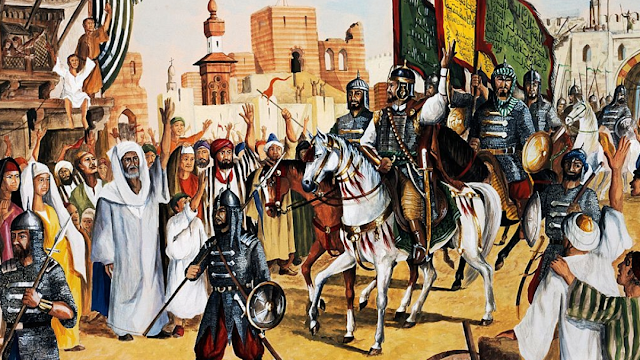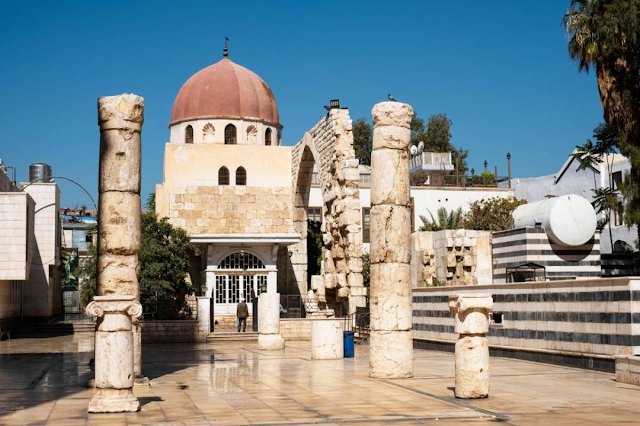Saladin, or Salahaddin, was the Sultan of Egypt and Syria who united the Muslim world under his rule and fought against the Crusaders in the 12th century CE. He is best known for his conquest of Jerusalem in 1187 CE, which ended almost nine decades of Christian rule over the holy city. In this blog post, we will explore how Saladin achieved this remarkable feat, how he showed his mercy and generosity to the defeated Christians, and what legacy he left for world history.
The Rise of Saladin
Saladin was born Yusuf Ibn Ayyub in the central Iraqi city of Tikrit in 1137 or 1138. His family was of Kurdish descent, and his father Ayyub and uncle Shirkuh were elite military leaders under the Zengid dynasty of Syria. He rose to prominence as a military commander under Nur al-Din, the Zengid ruler who fought against the Crusader states established by the First Crusade (1095-1099 CE). Saladin became the vizier of Egypt in 1169 CE, after overthrowing the Fatimid caliphate that ruled there. He then declared himself the sultan of Egypt and Syria, and consolidated his power by defeating rival Muslim factions and expanding his domains.
Saladin's main goal was to liberate Jerusalem from the Crusaders, who had captured it in 1099 CE and massacred its Muslim and Jewish inhabitants. He also wanted to unify the Muslim world under his banner and revive the spirit of jihad, or holy war, against the Christian invaders. He spent over two decades of his life fighting the Crusaders, and the year 1187 CE would bring him the greatest triumph of his career.
The Battle of Hattin and the Conquer of Jerusalem
In 1187 CE, Saladin launched a massive campaign against the Kingdom of Jerusalem, which was ruled by King Guy of Lusignan. He first besieged the fortress of Tiberias on the Sea of Galilee, where Guy's wife, Queen Sibylla, was staying. Guy marched out with his army to relieve the siege, but he fell into a trap set by Saladin. On July 4, 1187 CE, Saladin attacked Guy's army at the Horns of Hattin, a pair of volcanic hills near Tiberias. The Crusaders were surrounded by Saladin's forces, who cut off their access to water and set fire to the dry grass around them. The Crusaders suffered a crushing defeat, losing most of their knights and nobles, including Guy and Reynald of Chatillon, a notorious Crusader lord who had provoked Saladin by raiding Muslim caravans and threatening to attack Mecca and Medina. He personally beheaded Reynald for his crimes but spared Guy's life.
After this decisive victory, Saladin proceeded to capture most of the Crusader cities and fortresses in Palestine and Syria. He reached Jerusalem on September 20, 1187 CE, and laid siege to it. The city was defended by Balian of Ibelin. Balian managed to organize a resistance with the help of Patriarch Heraclius and Queen Sibylla, who had escaped from Tiberias. The city was full of refugees but had few soldiers. Despite this fact, the defenders repelled several assaults by Saladin's army.
Saladin realized that he could not take the city without causing great damage to the city, the people, and its holy sites. Therefore, he agreed to negotiate with Balian for a peaceful surrender. Saladin demanded to allow the Christian inhabitants to leave safely in return for a ransom. Balian initially refused, saying that he was hesitant that Muslims would treat them as they (Crusaders) had treated the Muslims in 1099 CE. Balian also threatened that if Saladin did not keep his promise, he would kill all the Muslim prisoners in Jerusalem, destroy all the holy places, and fight to the death. But then, Balian agreed to go with all the Christians and pay for a ransom of ten dinars per man, five per woman, and one per child.
The surrender was finalized on October 2, 1187 CE. Saladin allowed many poor Christians to leave without paying the ransom and even gave money from his own treasury to some of them. He also freed many Muslim slaves who had been captured by the Crusaders. He restored Muslim control over the holy sites in Jerusalem, especially the Al-Aqsa Mosque and the Dome of the Rock, which he personally purified and prayed in. He also showed tolerance and respect to the Christians and Jews who remained in the city, allowing them to worship freely and granting them protection and privileges. He handed over the control of Christian affairs in the city to the patriarch of Constantinople.
The Legacy of Saladin
Saladin's conquest of Jerusalem was a turning point in the history of the Crusades and the Middle East. It sparked a wave of enthusiasm and pride among the Muslims, who saw Saladin as a hero and a champion of their faith. It also provoked a strong reaction from the Christians, who launched the Third Crusade (1189-1192 CE) to recapture Jerusalem. The Third Crusade was led by three of the most powerful monarchs of Europe: Richard I of England, Philip II of France, and Frederick I of Germany. Saladin faced them with courage and skill, winning some battles and losing others. He finally signed a truce with Richard in 1192 CE, allowing the Crusaders to keep a coastal strip of land from Tyre to Jaffa, but keeping Jerusalem under his control. The truce also granted Christian pilgrims access to Jerusalem.
Saladin died in 1193 CE, leaving behind a vast empire that stretched from Egypt to Syria. He was buried in Damascus, where his tomb still stands today. He is remembered as one of the greatest Muslim leaders and warriors of all time, as well as a model of chivalry, generosity, and piety. He is revered by Muslims and admired by Christians and Jews alike. He has been immortalized in literature, art, and film, as well as in the hearts and minds of millions of people around the world.
Conclusion And Its Relations To This Day's Conflict in Palestine
When we see the conflict in Palestine today, we realise that Palestinians do not get the mankind treatment from the Israeli Jews that they are (Palestinians) entitled to. There have been thousands of innocent Palestinians struggling and killed by Zionists. We as human beings should be aware that this conflict must be ended to prevent other innocent people from dying and being killed in Palestine. Let the world see how Muslims like Saladin conquered not only the city but also the hearts of human beings. Also, let the people see how Zionist Israelis are cruel and sadist toward the Palestinians. We can't just watch, we must do something we could to end this conflict and prevent those innocent people from dying unjustly.
Sources
- Britannica.com: Saladin
- Worldhistory.org: Saladin's Conquest of Jerusalem (1187 CE)
- Wikipedia.org: Siege of Jerusalem (1187)
- History.com: Saladin
- Worldhistoryedu.com: Saladin: Biography and Achievements
- Britannica.com: Saladin
- Worldhistory.org: Saladin's Conquest of Jerusalem (1187 CE)
- Wikipedia.org: Siege of Jerusalem (1187)







Comments
Post a Comment